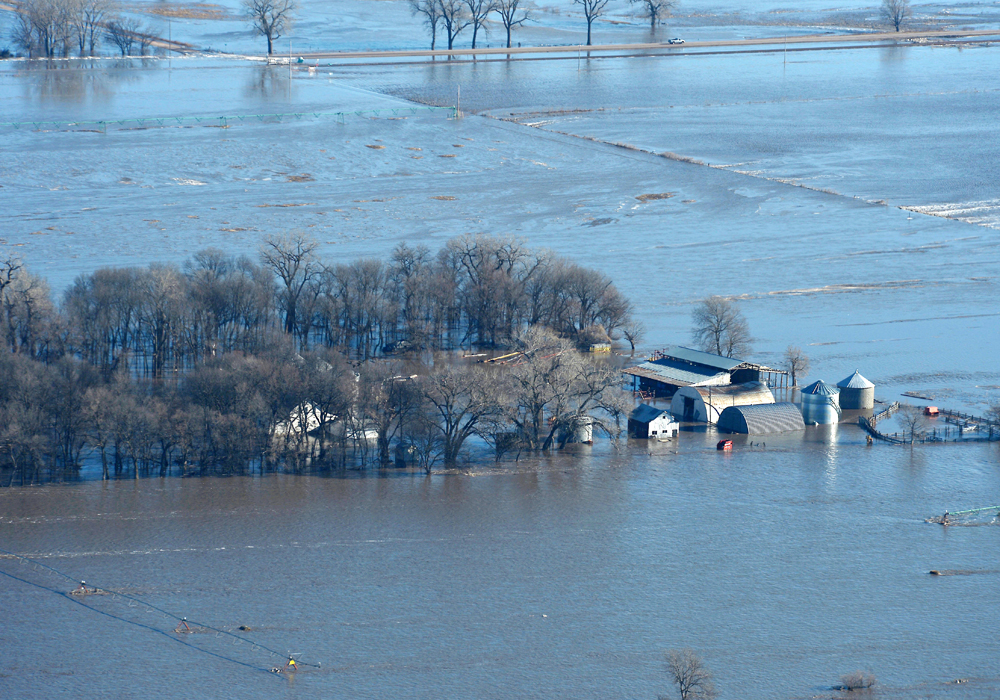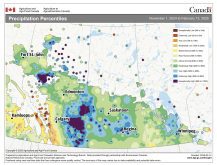“This is shaping up to be a potentially unprecedented flood season.”
Those sobering words were how Ed Clark, director of the United States National Oceanic and Atmospheric Administration National Water Center in Alabama, described the situation in large parts of the Midwest this spring.
The grain market, which has been mired in negative news about large stocks and the continuing trade war between China and the U.S., might yet be shaken out of its malaise
Record precipitation through the winter and a massive blizzard in Nebraska in early March has already caused extensive flooding and likely more is on the way.
Read Also

Russian wheat exports start to pick up the pace
Russia has had a slow start for its 2025-26 wheat export program, but the pace is starting to pick up and that is a bearish factor for prices.
The basins of the upper Mississippi and Red rivers received rain and snow this spring up to 200 percent above normal.
In Nebraska alone, the snow and flooding caused an estimated $1 billion in agricultural damage.
Livestock have died and millions of bushels of stored grain have been flooded.
While we commiserate with individual producers who have lost much, as of March 21 the market believed that damage to stored grain was not enough to get worked up about. As one market analysts put it: with an expected 1.835 billion bushels of U.S. corn ending stocks, does the loss of 100 million bu. mean much in the bigger picture?
However, markets will be looking to see if the situation delays planting and reduces seeded acreage.
The spring flood outlook produced by NOAA shows much of the heart of the corn belt facing major to moderate flood risk.
Because the Red River flows north into Manitoba, the risk of excessive water is serious there too.
Much depends on the weather in coming weeks. A wetter than normal spring in the Midwest would prevent fields from drying out and increase the number of acres not seeded or planted into mud.
The U.S. Climate Prediction Centre on March 21 forecast for April shows an increased probability for below normal temperatures and slightly above normal probability for high precipitation for the western Midwest. The three month April-June forecast is similar.
An exceptionally wet winter and spring in the Midwest in 1993 caused one of the worst and most costly floods in U.S. history. Many levees were breeched and 15 million acres of farmland were inundated, contributing to an eight percent drop in corn acres. It was a terrible year weather wise for the region with the exceptional rainfall continuing through summer. The average corn yield for the country was only 101 bushels per acre, about 20 bu. below the trend line for the time.
The Canadian government even sent specialists from the Prairie Farm Rehabilitation Administration to assist in the recovery.
There is no way to know if anything similar is going to happen this year. The forecast leans toward more rain than normal in the region this spring but not exceptionally heavy rain. If it dries up, the ability of modern machinery to get acres seeded fast lessens the risk.
And usually, but not always, it is better to have a bit too much water than a drought.
But the big funds have been holding near record short position in corn until now, meaning they were betting on lower prices. If the market turns against them, it could prompt a big, rapid price rise for crops.
But the gains will be limited by the comfortable world grain stocks, the ongoing South American harvest and the continuing U.S.-China trade conflict.
In Canada, the price upside is limited by political and trade problems.
China’s decision to stop all imports of Canadian canola seed has further hammered down the price of that key crop.
I hope they do not find some excuse to limit imports of other Canadian grains.
A Globe and Mail story quoted a Chinese trader last week who said strict customs inspections have caused Chinese buyers to also back away from imports of Canadian wheat, peas and linseed.
However, a spokesperson for the agriculture minister told the Financial Post that she could not confirm that trade disruptions had expanded to other crops.
In the current crop year, to the end of January, China was the second largest importer of Canadian wheat, taking almost 12 percent of the total, according to Canadian Grain Commission figures.
It was the largest buyer of Canadian peas, taking 678,600 tonnes, or 65 percent of the total.















